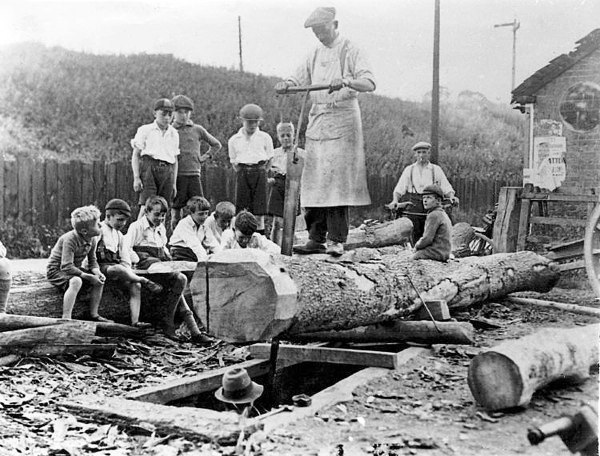
I have previously referred to the aptitude displayed by the early settlers for all kinds of bush work, such as felling trees and sawing timber, if located near a bush, and as there were several fine patches of bush in the valley at the time of its being first settled, no time was lost in turning the timber to account for house building, etc.
One middle-aged man, head of a large family, who had probably never seen a pit saw before he came to New Zealand, had with his sons’ assistance dug saw pits, and while his two eldest sons were sawing at one pit, as if they had been accustomed to the work for a number of years, the old man might have been seen at another pit, sawing away on the top of a huge log, with a younger son, aged about 14, in the pit, actually standing upon a stool to enable him to swing the long pit saw the necessary length of stroke.
I heard of one amateur pitman whose ignorance nearly resulted in a serious accident; the log while being sawn rests upon movable cross-pieces called transoms, and it is the duty of the man in the pit to give the signal to halt when it is necessary to shift the transom.
Upon the occasion referred to, the log being large, the top-sawyer could not tell exactly when to stop, but was momentarily expecting the signal to do so from his mate in the pit; at last he inquired if he had not reached the transom. “Yes!” replied his mate, “and nearly through it;” it may be guessed it did not take that man many seconds to descend from his perilous position, and thrust a spare transom beneath the log.
W. T. Pratt
Colonial Experiences; Or, Incidents and Reminiscences
of Thirty-four Years in New Zealand – 1877
—Jeff Burks